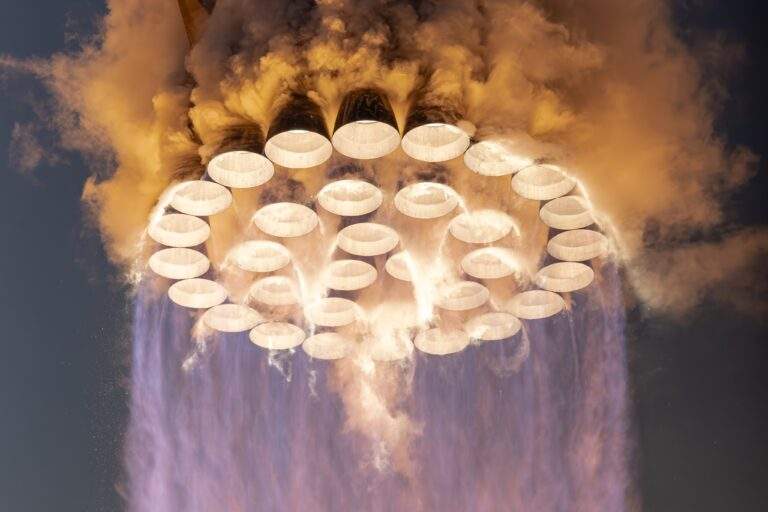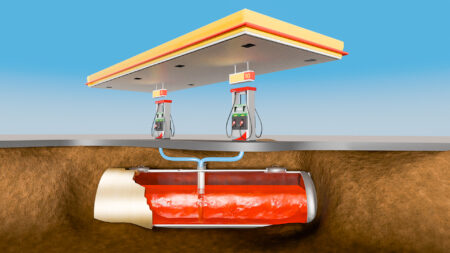On the 6th of February 2018, the Falcon Heavy launched Starman in a Tesla Roadster into space. Normally, for the first test flight of a brand new rocket, companies will use what’s known as a mass simulator.
This is usually just a block of heavy metal placed in the payload bay to simulate what the rocket will feel like when it’s carrying a heavy satellite. Because satellite companies aren’t going to put their expensive satellite on a brand new rocket. However, for Falcon Heavy’s first flight, Elon Musk had a different idea. SpaceX built a custom rig that could place Elon’s very own Tesla Roadster ontop of the Falcon Heavy’s second stage.
Starman’s journey
During this spectacular event, Starman orbited the Earth for 6 hours, capturing beautiful images before the Falcon Heavy upper stage sent the car into an orbit around the sun. But where is Starman now? And will we ever see him again?

After Starman left Earth’s orbit, scientists and amateur astronomers around the world pointed their telescopes towards the night sky in order to track the Roadster and predict its future orbit. A team at JPL used data provided by SpaceX and predicted that Starman would pass by Earth in the year 2091, getting within a few thousand kilometers. Despite many thinking it was going to Mars or orbiting Mars, the Starman was actually sent into an orbit around the Sun, but one that would every now and then get close to Earth and Mars. Nevertheless, astronomers thought that they knew excactly where it was going.
This model proved to be accurate for the first few months, but since it was made from a limited amount of data, anything beyond that became increasingly inaccurate. Without making more observations of the Roadster, astronomers would struggle to make this prediction much more accurate.
It wasn’t until March 2019 that we got a solid prediction of Starman’s future. Thanks to an observation of the Roadster seen from a telescope in South Africa, JPL were able to refine their measurements and accurately predict Starman’s path for the next 50 years.
They concluded that Starman was on a path that would pass by Mars in the year 2020, getting within 4.5 million miles. At that point, the current telescopes we have on Mars weren’t capable of observing an object as dim as the Roadster.
Where will Starman will go next?
Starman will make a closer approach to Mars in the year 2035, getting as close as 1.5 million miles. By then, it’s likely that we’ll have more advanced telescopes on and around Mars to capture an image of the Roadster, even if it’s just a tiny dot in the sky. Even without that, the telescopes we have in space should be able to observe Starman as it flies by the red planet. But predicting it’s future path is far from easy.
Every close encounter with another planet makes small changes to Starman’s orbit, and these changes are amplified over time. We have advanced computer software that can calculate these changes, but as with everything, small innacuracies amplified over time can make a massive difference to the final prediction. Not only that, the solar energy emitting from the sun is slowly pushing the Roadster away, increasing its speed by a few metres per second, every year.

After making further observations, astronomers were able to ammend their initial prediction to one that was far more accurate. Starman will make its closest approach to Earth in the year 2047, passing by at just 3 million miles. At this distance, telescopes on Earth will be able to observe the Roadster and record its position in the sky, giving us a more refined prediction of Starman’s orbit for many years to come.
To be clear, these observations won’t show a clear outline of a Tesla with a white figure behind the wheel, it will simply be a blob of light. But the fact that we can predict where it’s going to be and then actually see it is still very impressive. But what if we were able to catch Starman during this close approach?
Satellite retrieval
The idea of retrieving satellites from space isn’t unheard of. Due to the enormous payload bay on the Space Shuttle, it was capable of retrieving faulty satellites and returning them back to Earth. This was one of the many advantages of the Space Shuttle and one of the main ideas behind it’s design and development. During STS-51, astronauts managed to grapple two communication satellites into the payload bay using EVA jetpacks and the Shuttle’s robotic arm. Since they were in zero-G, these satellites basically weighed nothing, so it was very easy for the astronauts to maneuver something that would be effectively the weight of a large car on Earth.

Those satellites were returned to Earth and sold to new customers who relaunched them into the correct orbits. This is still one of the only times that a satellite has been captured and relaunched. However, retrieving satellites outside of Earth’s orbit is much more challenging and requires a lot more energy.
A Japanese spacecraft which launched in 2014 has slowly made its way out to an asteroid located 180 million miles from Earth. It has already managed to retrieve samples from the surface and it will continue to survey the asteroid before returning those samples back to Earth in 2020.

Using Starship to retrieve Starman
Although the Roadster is a much heavier sample to bring back from space, Starship could follow a similar plan to retrieve the Roadster. With the enormous capability of Starship, it could refuel in Earth’s orbit and perform a maneuver to match the Roadster’s orbit. The Roadster overall is actually a very small payload and the mass is much less than what a typical rocket would launch, especially a rocket like Starship which is capable of launching much heavier payloads. With a large amount of fuel remaining, it could then capture the Roadster and store it in the payload bay before returning to Earth.
SpaceX are already working on the payload door design for Starship. It’s likely that SpaceX will have a separate Starship variant, specifcally for retrieving things from space. This would need to have a large door on a hinge that could open up and reveal the entire payload bay section.
So perhaps one day, many years down the line, the generation that experienced the iconic Falcon Heavy launch will be reunited with Starman and his Roadster. Or perhaps, it’s best to let him wander the solar system forever like a mascot for human civilization.













Is Winston Niles Rumfoord in the spacesuit aboard the Starman and where is the dog Kazak? How will we know if and when it has encountered Vonnegut’s chronosynclastic infundibulum?